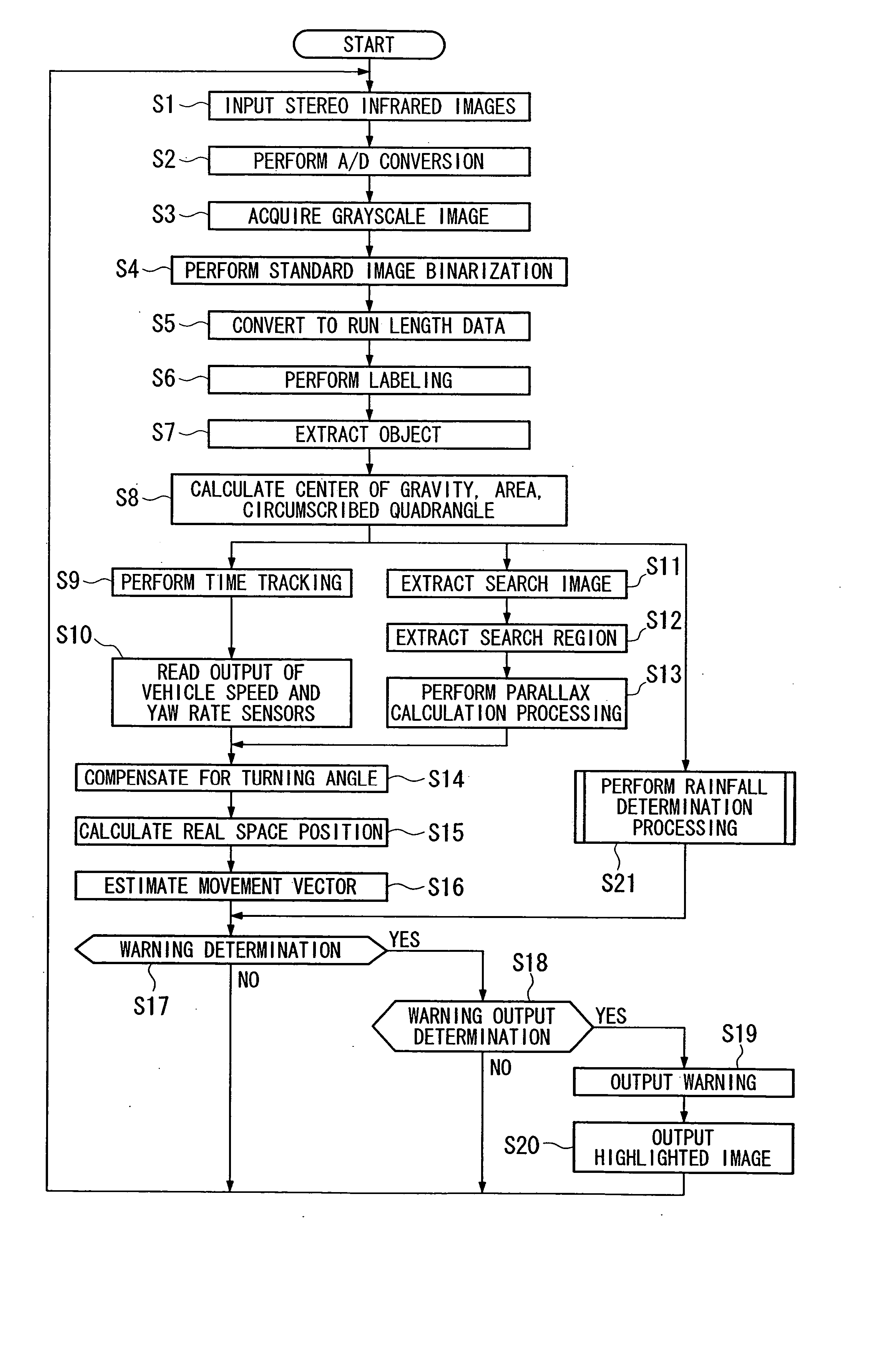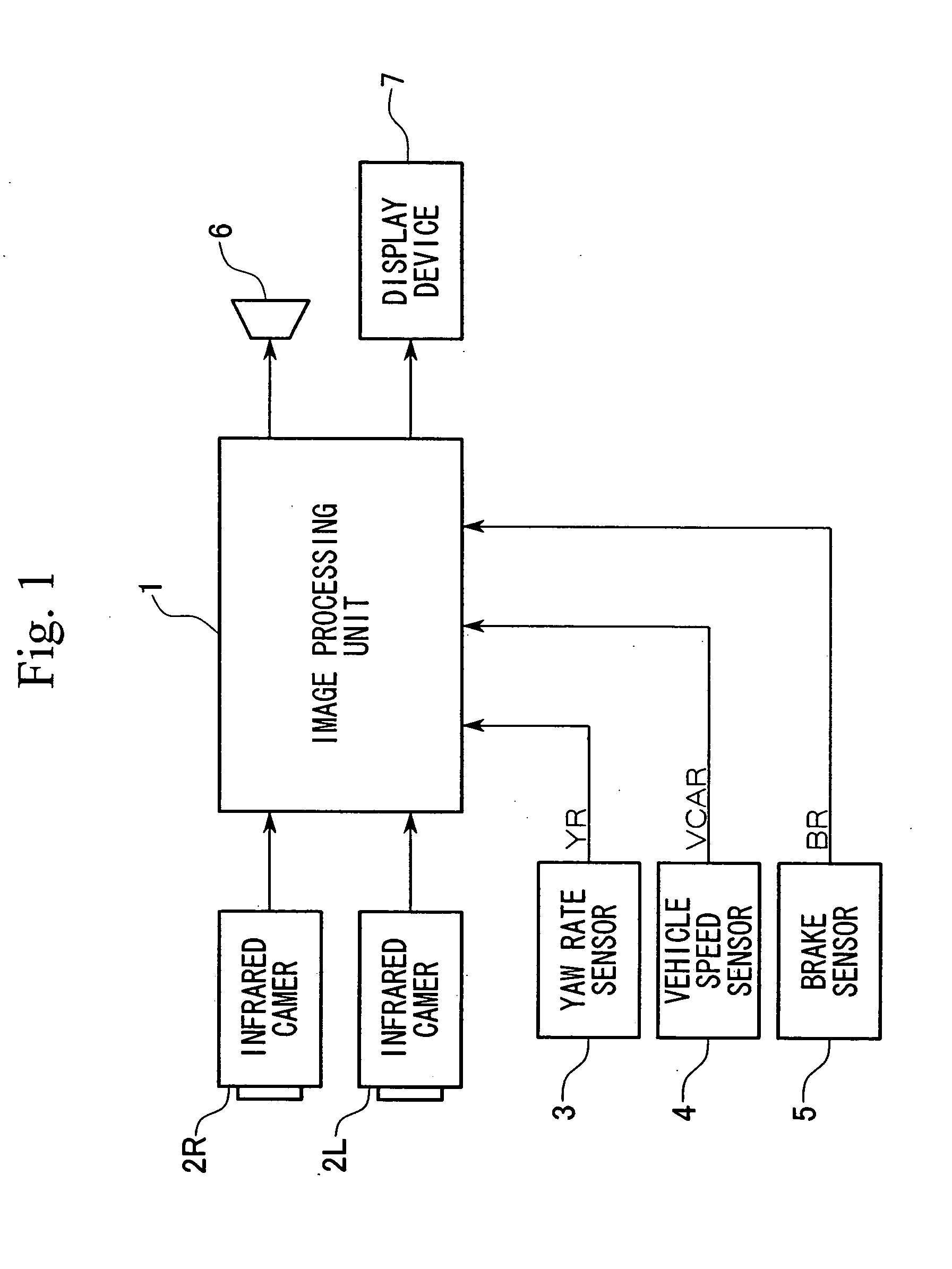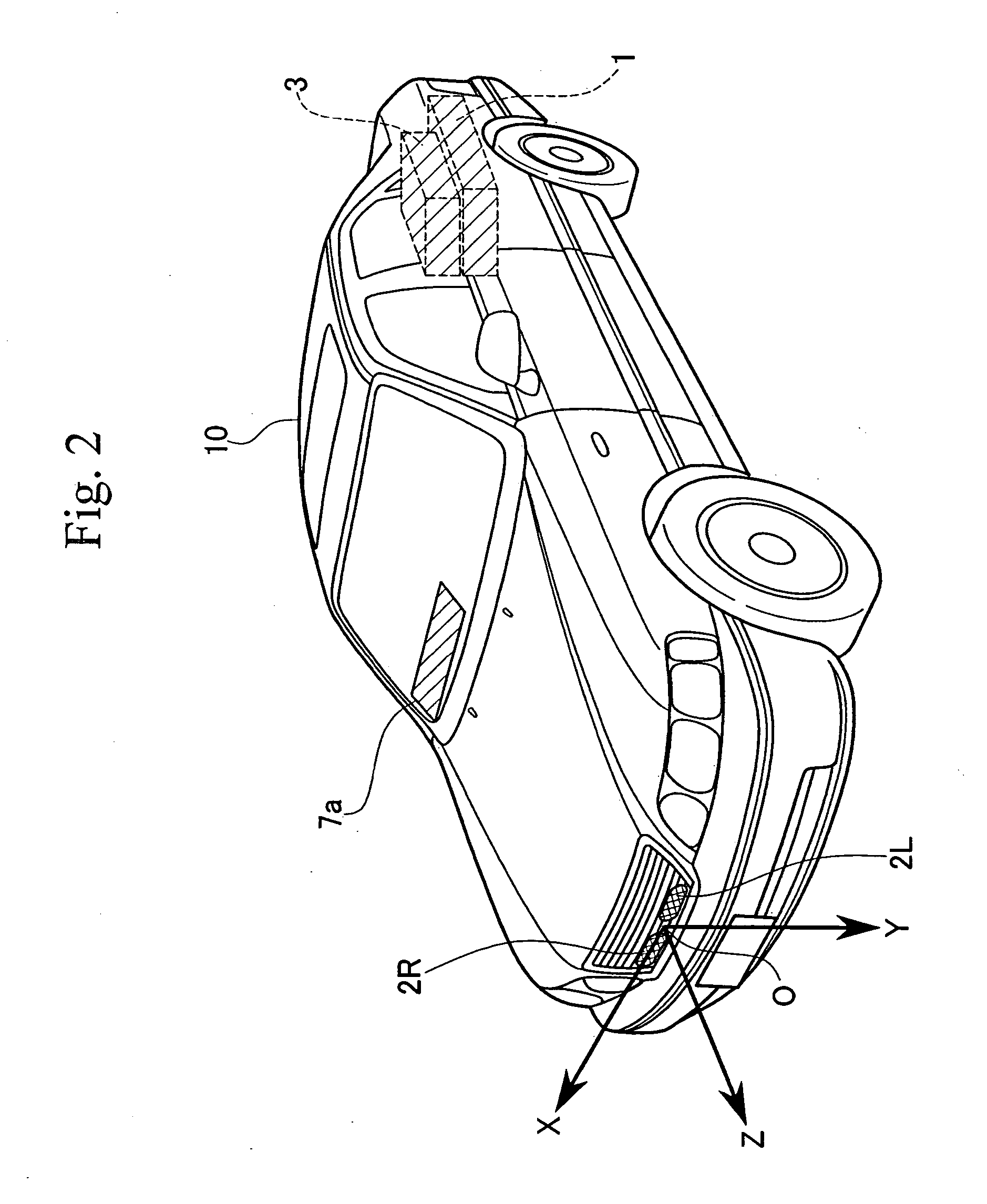Vehicle environment monitoring device
a technology of vehicle environment and monitoring device, which is applied in the direction of pedestrian/occupant safety arrangement, image enhancement, instruments, etc., can solve the problems of inability to fix objects, inability to accurately reflect the height of pedestrians, and indeterminate binary shape of pedestrians on infrared images
- Summary
- Abstract
- Description
- Claims
- Application Information
AI Technical Summary
Benefits of technology
Problems solved by technology
Method used
Image
Examples
first embodiment
[First Embodiment]
(Overall Construction)
FIG. 1 is a block diagram showing the construction of a vehicle environment monitoring device according to a first embodiment of the present invention.
In FIG. 1, reference numeral 1 indicates an image processing unit comprising a CPU (central processing unit) which controls the vehicle environment monitoring device of the present embodiment, connected to two infrared cameras 2R, 2L which can detect far infrared radiation, a yaw rate sensor 3 which detects the yaw rate of the vehicle, a vehicle speed sensor 4 which detects the traveling speed of the vehicle (vehicle speed), and a brake sensor 5 which detects operation of the brakes. Accordingly, the image processing unit 1 detects moving bodies such as pedestrians or animals in front of the vehicle from infrared images of the environment of the vehicle and signals indicating the traveling state of the vehicle, and emits a warning when a determination is made that a collision is likely.
Fur...
second embodiment
[Second Embodiment]
A second embodiment of the present invention is described below.
(Overall Construction)
The construction of the vehicle environment monitoring device of the second embodiment of the present invention is the same as that of the vehicle environment monitoring device of the first embodiment shown in FIG. 1, and a description thereof is therefore omitted. Specifically, the difference between the vehicle environment monitoring device of the first embodiment and the vehicle environment monitoring device of the second embodiment is that in the vehicle environment monitoring device of the first embodiment, a distinction is made between a state in which the environment of the vehicle 10 and the infrared cameras 2R and 2L are normal and a state in which they are being affected by rainfall (including cases where the camera lens is dirty) by comparing the difference between the height ΔHg of the grayscale object and the height ΔHb of the binarized object to a predetermined...
PUM
 Login to View More
Login to View More Abstract
Description
Claims
Application Information
 Login to View More
Login to View More - R&D
- Intellectual Property
- Life Sciences
- Materials
- Tech Scout
- Unparalleled Data Quality
- Higher Quality Content
- 60% Fewer Hallucinations
Browse by: Latest US Patents, China's latest patents, Technical Efficacy Thesaurus, Application Domain, Technology Topic, Popular Technical Reports.
© 2025 PatSnap. All rights reserved.Legal|Privacy policy|Modern Slavery Act Transparency Statement|Sitemap|About US| Contact US: help@patsnap.com



